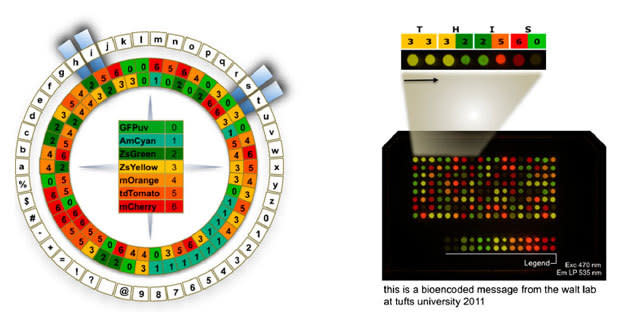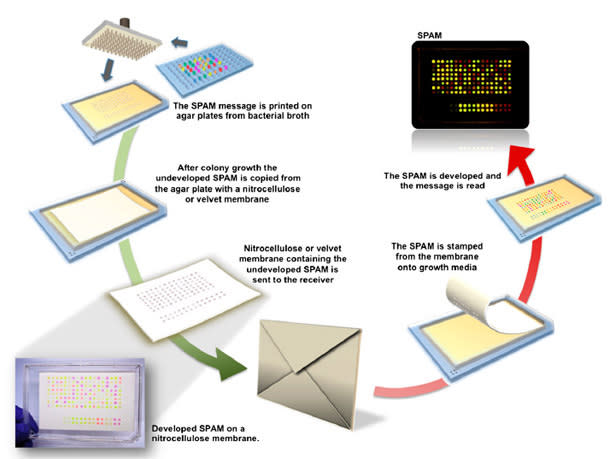 Today in Tech
Today in TechGlowing bacteria can be used to encode spy messages

In the future, spies and undercover operatives could use an intricate method to encode messages: one that entails usage of live, glowing microorganisms. The method, dubbed "Stenography by Printed Arrays of Microbes" (SPAM), modifies the genes of seven different E. coli strains so they'd each emit a different fluorescent color.
Encrypting and decoding bacterial messages
A pair of colors makes up each letter, number, or symbol. And with seven colors available, 49 characters can be assigned their own binary coding. The process begins with the sender writing the encoded message on a growth medium using colonies of bacteria. The message is then copied onto a velvet or a nitrocellulose membrane (think of it as some sort of a special paper) that can be sent through mail. Whatever's written on the membrane can't be anything lengthy, though — each special paper can only contain around 500 to 1000 characters.
The recipient transfers the bacteria from the membrane onto another growth medium to re-grow the microorganisms. The message, however, appears invisible to the naked eye — it can only be seen under a certain wavelength of light. As such, an intercepted message couldn't easily be decrypted because other wavelengths will spew out gibberish.
SPAM's developers — a group of scientists from Tufts University — also found a way to make message decoding even harder by using antibiotics. Each E. coli strain could be engineered to be resistant to a specific antibiotic. As a result, different types of antibiotics can yield different messages, and only those who know which to use can properly decipher the message. Another possible safety measure is to program the fluorescent properties of the bacteria to fade over time, so the message self-destructs if it doesn't reach the recipient within a particular span of time.
Glowing bacteria's applications
That the study was funded by the U.S. Defense Advanced Research Projects Agency (DARPA) instantly makes one think of espionage applications. But the study's head, Manuel Palacios, says that in reality, "that's the last application this [project] would be used for." He's looking into using the method to create biological barcodes for genetically-modified organisms instead. Too bad. But if it ever does get used for less boring purposes, New Scientist notes that the character limitation means the technique is only good for short mission updates and not for smuggling state secrets.
This glowing bacteria study isn't the only fluorescence-oriented research lighting up the way to scientific advancement. Glowing cancer cells, for instance, make tumor removal easier, while the research gained from a glowing cat and a glowing beagle could help with AIDS and genetics studies.

PNAS via RSC, Discover Magazine
This article was written by Mariella Moon and originally appeared on Tecca
More from Tecca:
